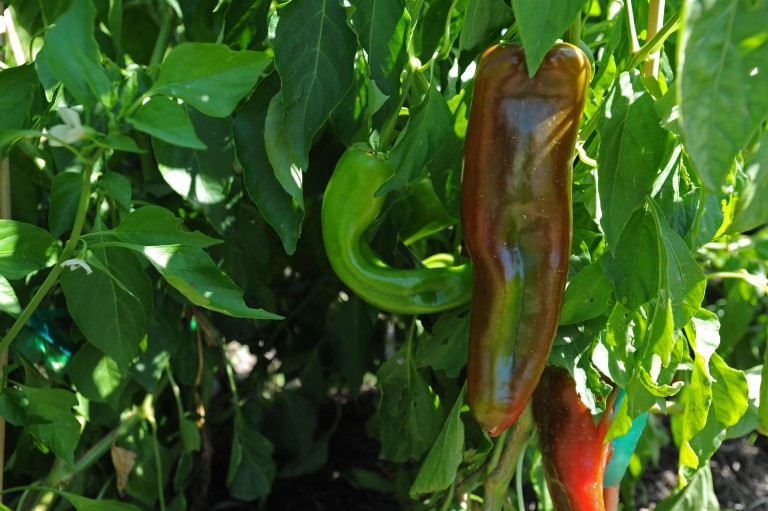Chile Peppers 101 NMSU’s Chile Pepper Institute breaks down the science of the spicy fruit
“It’s interesting that birds do not have the heat receptors, so they can eat the fruits of a very hot chile peppers and spread the seeds.”
“The very first chile peppers evolved around Bolivia in South America,” said Paul Bosland, an NMSU Regents Professor and director of the Chile Pepper Institute. “The early wild peppers were very small and round and spread, probably by birds, for tens of thousands of years to the southern portion of the United States and all the way to the tip of Chile and Argentina.”
Experts believe that when the first humans arrived in the Western Hemisphere, probably around 15,000 years ago, they began to cultivate chile peppers and select them for various traits. The plants also naturally cross-pollinate well, so new varieties are easily developed and constantly being made. Today, there are thousands of chile pepper varieties.
Test your chile knowledgeThink you know your chile 101? |

Today, chile peppers are used in a wide variety of cuisine, depending on the heat level produced. The bell pepper, or the sweet pepper, has no heat at all. Those can be used fresh in salads, or cooked in various dished. Mild to hot chile peppers include poblanos, New Mexico chile pepper varieties and jalapeños. Those can be eaten fresh, dried or cooked and used traditional Mexican dishes and salsas. Further up the heat scale are tabascos and similar peppers used in hot sauces. Habaneros and chiltepins, are considered very hot. Anything above one million Scoville Heat Units, including the Bhut Jolokia and the Trinidad Scorpion are considered super hot.
“There’s a lot of people out there who love that burn,” Coon said. “We can make sauces out of those kinds of peppers, but they really are incredibly hot. The good news, every one of those is edible. As long as it’s a true capsicum, it’s edible. Even if it’s an ornamental chile pepper, it’s edible.”
Chile peppers tend to be rich in vitamins A and C and have other nutritional values as well. The purple pigment present in some peppers is produced by anthocyanin, an antioxidant that can help prevent cell damage in the body. Red chile peppers are rich in carotenoids, which is considered good for eye health.
“A green chile pepper, compared to a red chile pepper isn’t going to be as sweet,” Coon said. “Once you get into the red stage, it’s going to produce more sugar so it’s going to be a little sweeter.”
Going forward, Coon says the Chile Pepper Institute’s efforts will focus on helping chile growers compete in an ever-changing environment, with economic, environmental and sustainability challenges. For years, their research has focused on disease resistance in plants and helping to breed other useful traits in chile peppers to make them better for growers.
“As long as it’s a true capsicum, it’s edible. Even if it’s an ornamental chile pepper, it’s edible.”